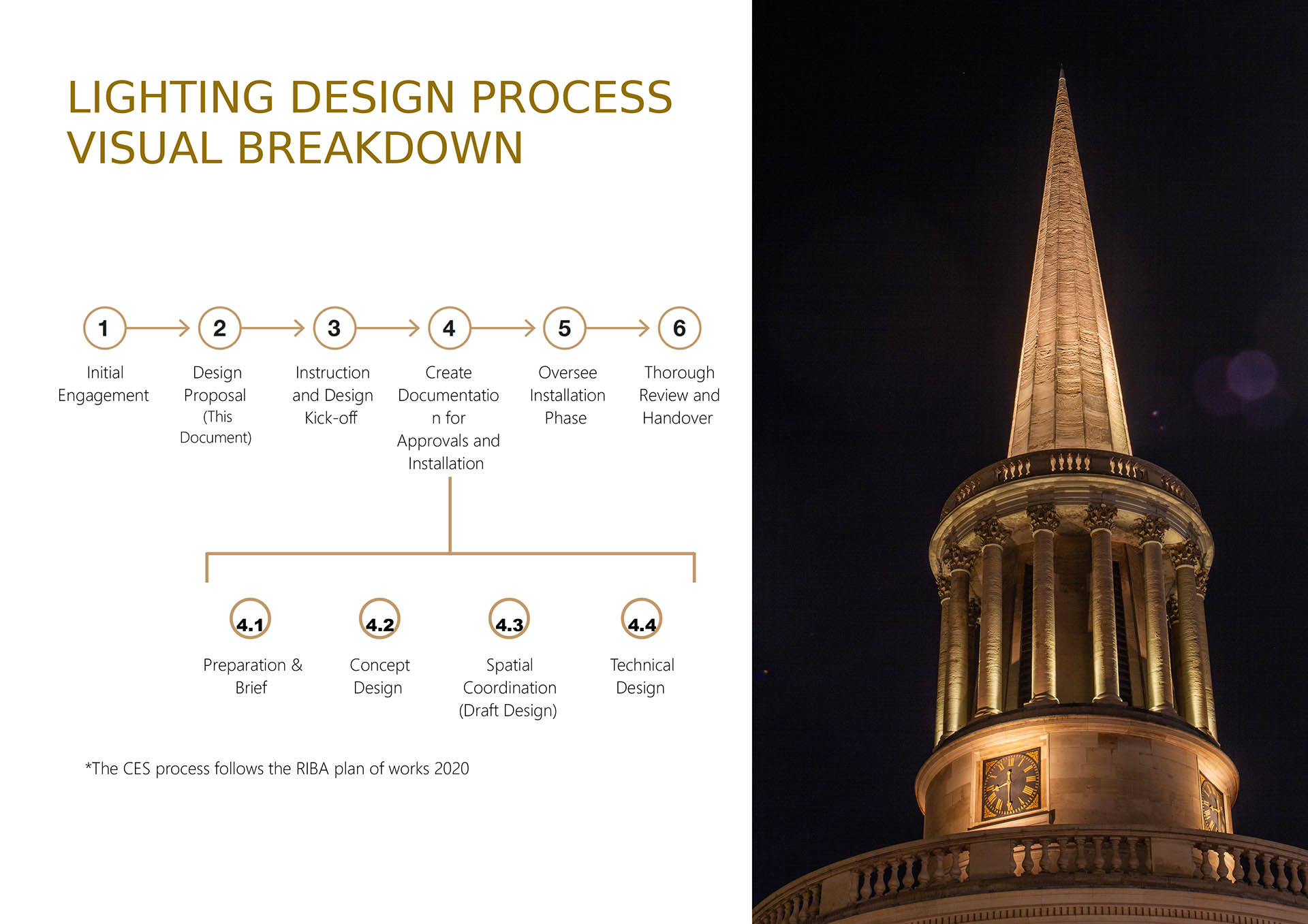Lighting design
The lighting design process is a multi-step journey that begins with understanding the projects goals, budget, and aesthetic requirements. The designer works closely with the client, architects, interior designers, and other stakeholders to define the lighting needs of the space, taking into account both functionality and atmosphere. The designer must also consider the architectural features and layout of the space to create a cohesive lighting plan. This includes selecting appropriate lighting types such as ambient, task, and accent lighting, as well as choosing the right fixtures, materials, and technologies.
Once the conceptual design is defined, the lighting designer creates detailed layouts and lighting control strategies. This step involves determining the precise placement of light sources, evaluating energy efficiency, and considering sustainable practices such as LED fixtures or smart systems for controlling light intensity. Computer simulations or mock-ups may be used to visualise the lighting effects before final implementation.
During the installation phase, the designer works closely with contractors to ensure the design is executed properly. After installation, post-installation adjustments and fine-tuning are often required to achieve the desired effect and to make sure the lighting meets both functional and aesthetic goals. Throughout the entire process, collaboration and constant communication are essential to ensure the lighting enhances the space effectively.
Our designers are experienced in illuminating delicate church interiors, academic institutions, and heritage landmarks with equal care.
Our new lighting system was truly impressive.... It’s a testament to the dedication and expertise that went into delivering such an excellent result.
- Jim Lang, St Andrews & St Cuthman, Steyning

Contact Us
Have a question or a project in mind? Get in touch — we’re here to help and happy to discuss your requirements.

